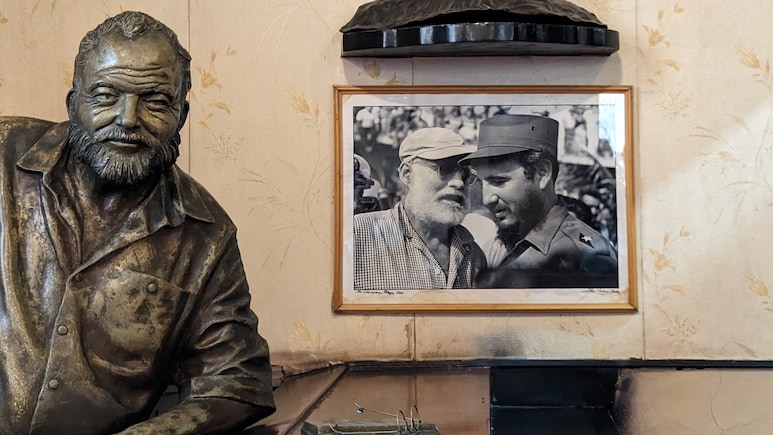
Sometime in 1960, writer Ernest Hemingway found himself with a bitter pill to swallow. It was the last glass of daiquiri he was downing in his favourite bar in Havana. The communists and their revolution had made it difficult for Hemingway to stay on in Havana, the Cuban capital he had fallen in love with and moved to twenty-one years ago. He had to leave. The Cold War made it inevitable: he had to pick from between US and Cuba, and the writer chose the former. Hemingway left Havana for its mightier neighbour. He went to Idaho but not without a promise: he was going to return to the Havana where he wrote, played, loved and lived.
The next year, Hemingway shot himself in the head.
A few thousand miles away, Havana mourned Papa, the name it had bestowed on its wayward child.
A Birth Anniversary Like Any Other
Hemingway, today, is long gone. The classics shelves in bookstores around the world store a thin paperback copy of Old Man And The Sea as birth anniversaries come and go. Everywhere, Hemingway is a memory at best.
Not in Havana. The city that Hemingway loved and let crush him, loves him back equally devastatingly. It is a love affair for the ages; one that outlasted all of Hemingway's four marriages put together. The writer first made a stop in Havana on a layover to Spain in 1928. He spent three nights in the city and made up his mind. He was going to return.
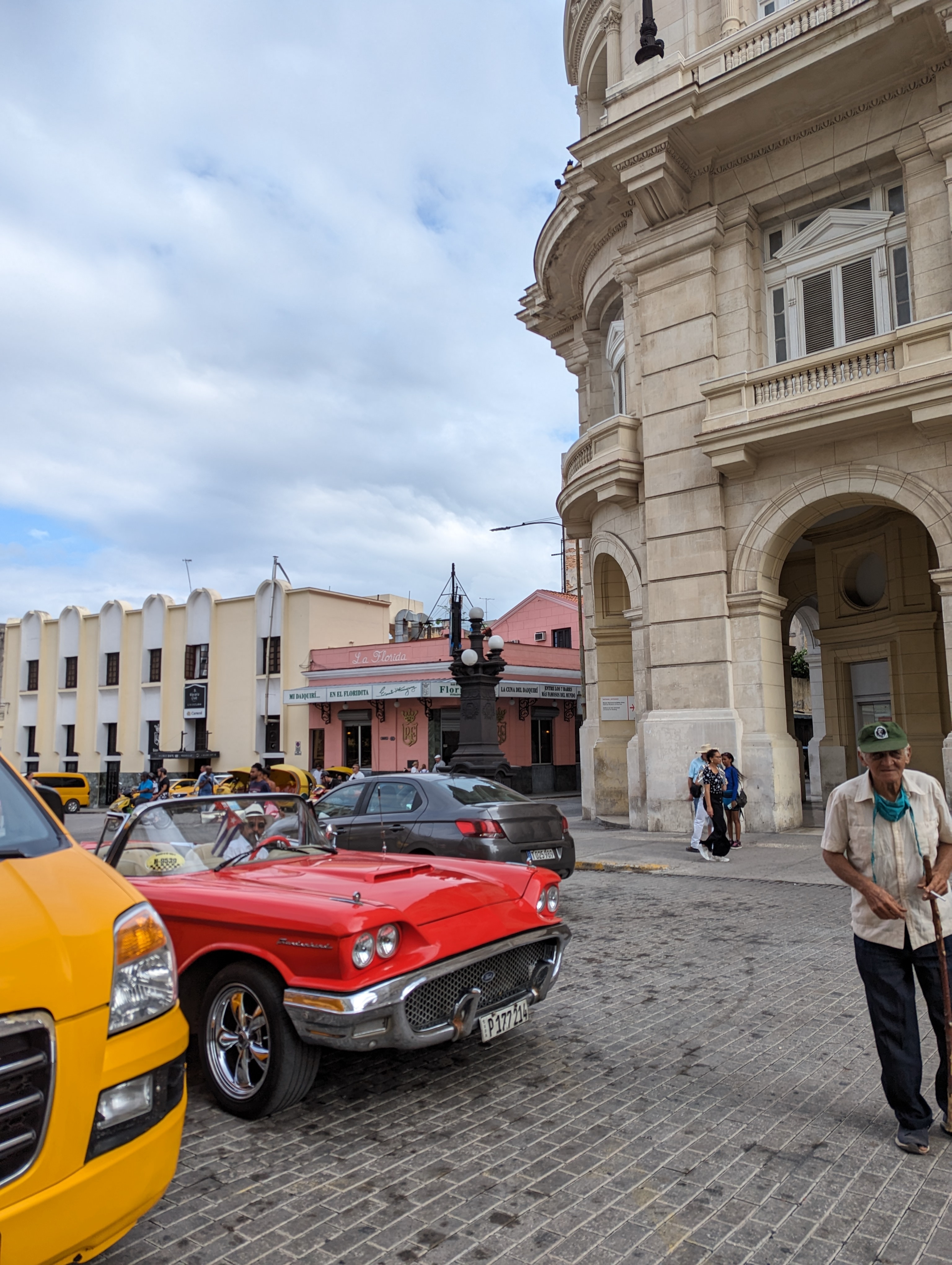
Outside El Floridita. Photo: Author
In 1932, he came to Havana for the second time, and brought along two friends. He stayed at Hotel Ambos Mundos on that visit and walked down a few minutes for a drink. This was going to be the first time Hemingway set foot in a bar called El Floridita. He did not know that he was to change the history of that bar with that visit.
The Most Famous Landmark In Havana
Ask anyone in Havana the address of El Floridita. A seven-minute walk from the Capitol, down a boulevard lined with colourful vintage Fords and Chevrolets, you'll bump into the occasional beggar asking you for a dollar. Men in bright-yellow scooped-out coconut-shell-shaped taxis wait for a ride. A toothless grin follows if you ask them for directions to Hemingway's favourite bar in the whole wide world; and there you have it: the Cuban revolution anthem Guantanamera performed by the band Quinteto D'Amore bellowing out of the glass doors, bowtied bartenders ruffling up rows after rows of syrupy-sweet daiquiris, and patrons lining up for a 'Hemingway Special'. You have entered El Floridita.
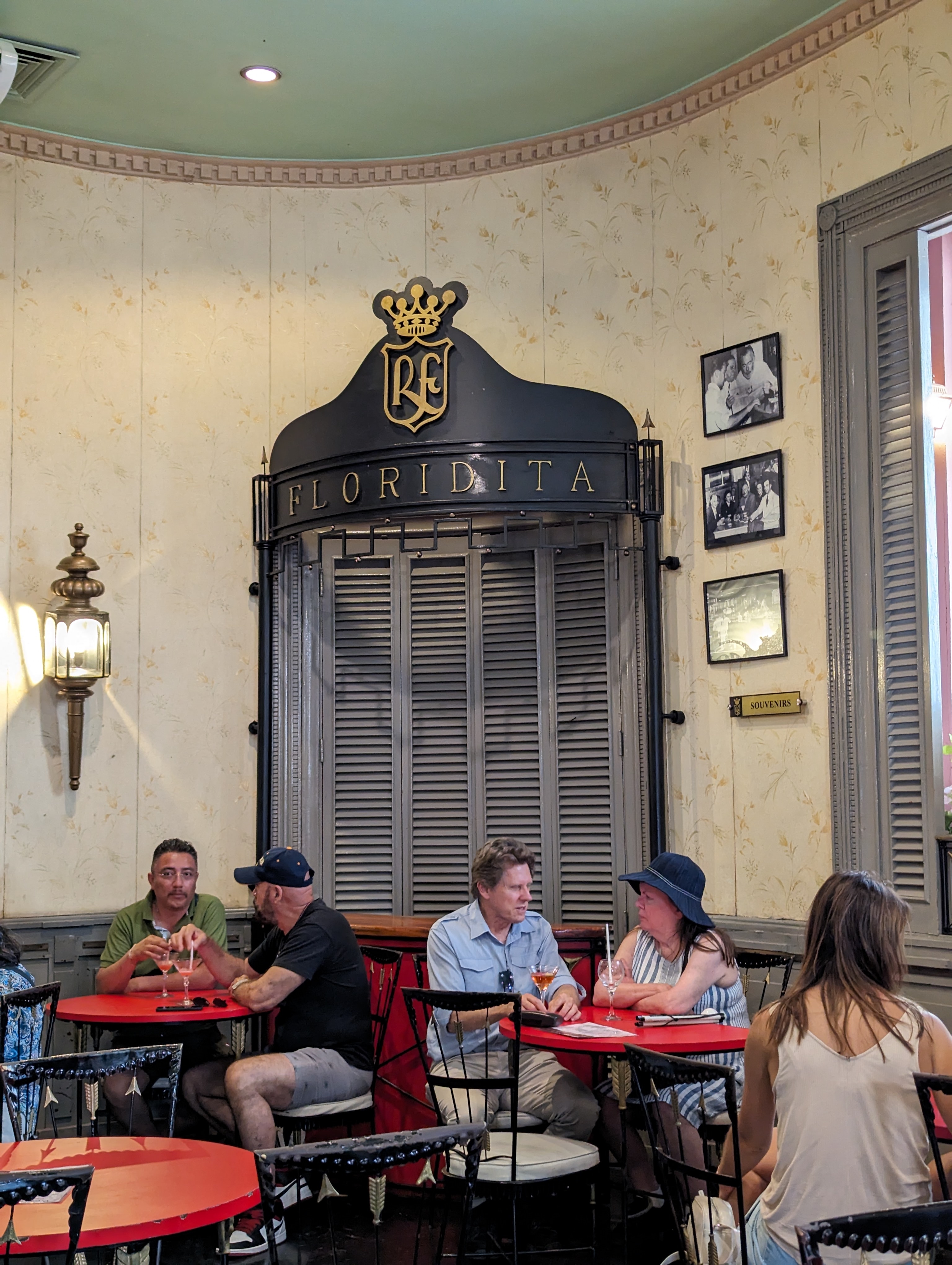
In Ernest Hemingway's favourite bar. Photo: Author
You are expected to know why you are at the bar when you're at the bar. El Floridita holds the hype for being one of the most famous bars in the world. No trip to Havana is complete without it. No trip to Cuba is complete without it.
A Seat For Papa
Once you're done taking in the mixologist's dance to your right, your eyes go left. There, a life-size bronze statue by Jose Villa Soberon of Cuba's most famous expat sits at the bar. Meet Ernest Hemingway; world-famous writer and mad lover of Havana. The Hemingway corner is the most famous spot at the mahogany table.
You'll find a queue of patrons waiting to throw their arms around Papa, as their friends go clickety-click on their phones. There are framed photos of Hemingway with a host of personalities. The one with Fidel Castro mid-conversation is arguably the most popular.
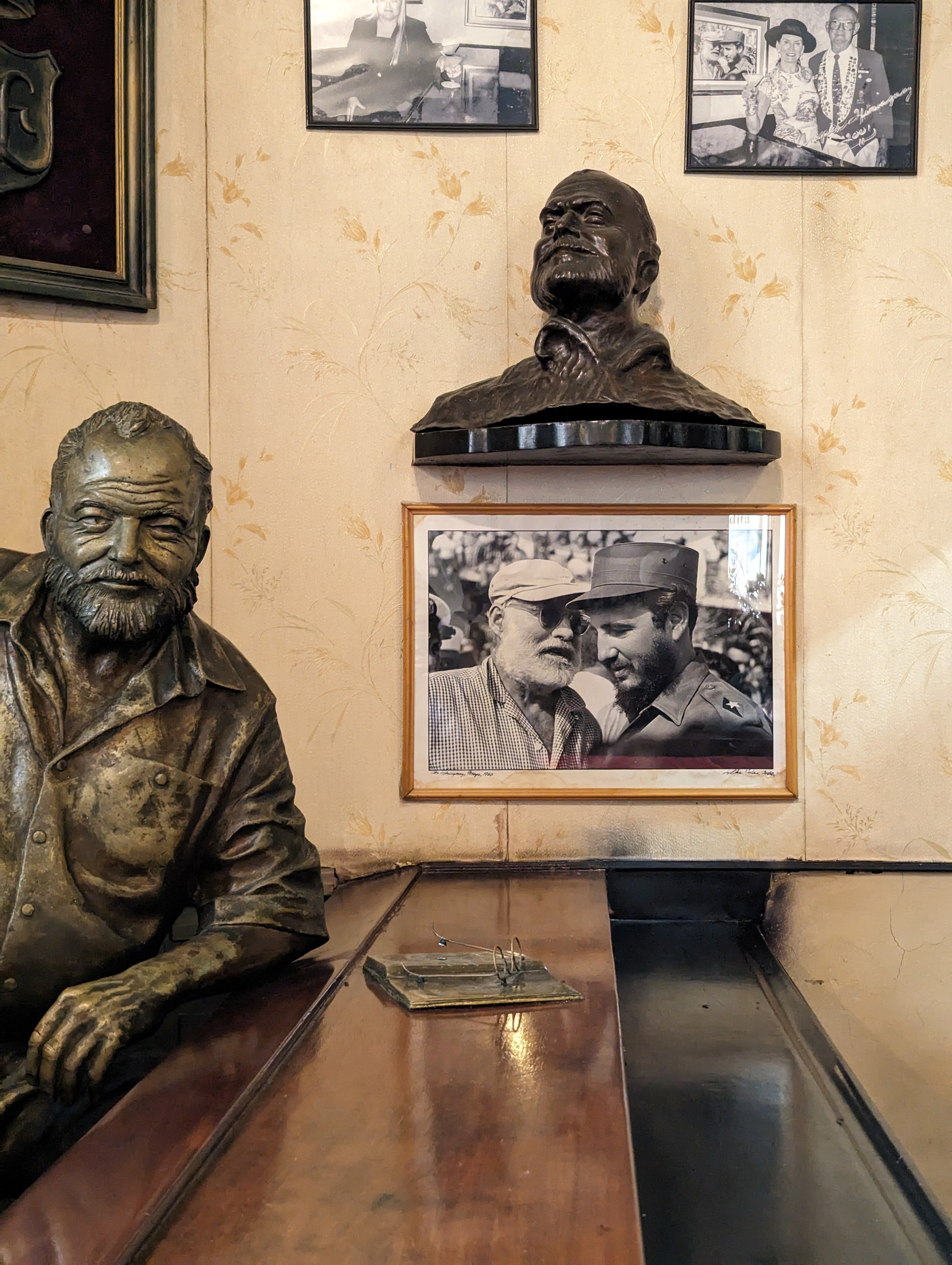
The photo of Ernest Hemingway (L) and Fidel Castro. Photo: Author
The Birthplace Of Daiquiri
All of it is a moment for Instagram. Hemingway might have scoffed it off but El Floridita is happy cashing in on it. A Hemingway Special daiquiri is the most expensive cocktail at the bar. While a regular daiquiri in the land of rum would cost you INR 350, Hemingway's favourite will set you back by double the amount. Price inclusive of history and Hemingway.
El Floridita is the bar where the daiquiri was invented. In 1914, Catalan immigrant Constantino Ribalaigua Vert moved to the bar as its bartender. Four years later he bought the place. In 1931, the experimenter that Constantino - 'Constante' to his guests - was, he created the daiquiri. Rum cocktails were his favourite. A year later, the fame of Floridita's daiquiris brought Hemingway to Constance. The writer wasn't disappointed. His daiquiri was special. It helped his pen flow, as it did deal with difficult people. Hemingway, a diabetic, had his daiquiri sugarless.
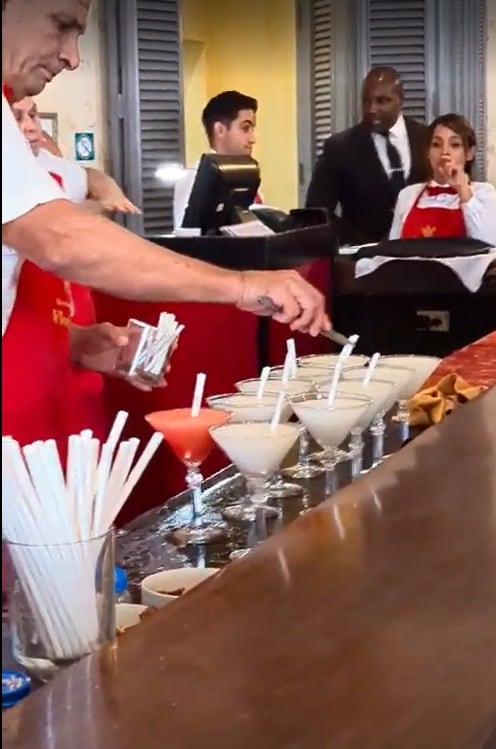
The many daiquiris at El Floridita. Photo: Author
Today at El Floridita, you find a Hemingway Special the same way; except for the sugar. You need to ask if you want it the way Hemingway had.
Hemingway's Havana
In 1939, Ernest Hemingway moved lock stock and barrel to Havana with his third wife, Martha Gellhorn. The couple bought a 'lookout farm' in Havana the following year. Finca Vigia was home to the Hemingways and a dozen cats that shared the place with them. The Third Mrs Hemingway soon made way for the fourth, but the writer's love for daiquiris stayed constant. Hemingway regularly drove down the half-hour way from his home to El Floridita for the drink.
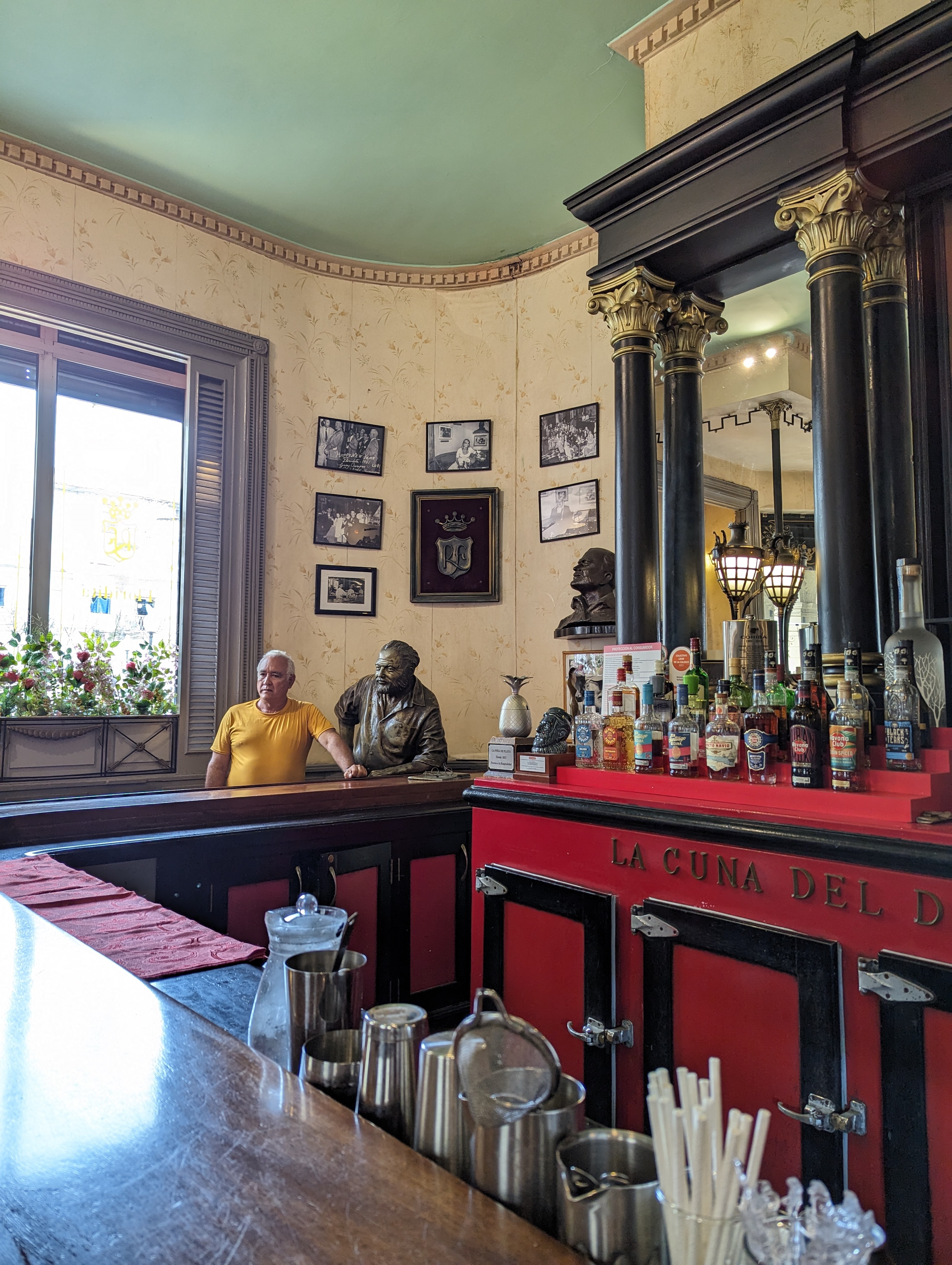
Posing with Papa. Photo: Author
When the daiquiri hits you, Quinteto D'Amore sings out Guantanamera at the top of their voices, busy patrons jostle for a space next to Papa's bronze statue... you might catch Hemingway winking. This is his Havana. This is the Havana he loved.
Now you too know why.
Also Read | In Portugal: Why Travelling To A Chapel Made Of Human Bones Made Perfect Sense For A Birthday Trip
Track Latest News Live on NDTV.com and get news updates from India and around the world

